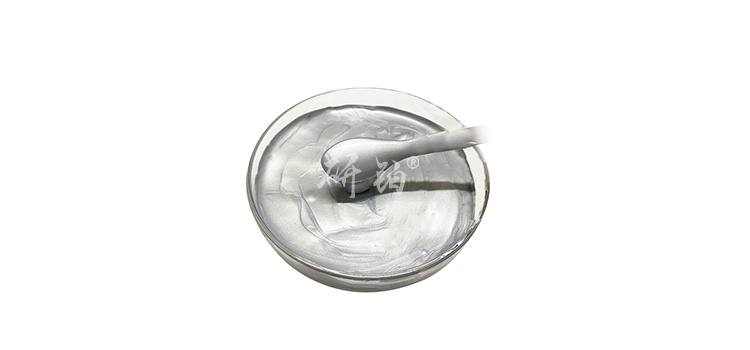Pressure sintered silver pasteIt has a wide range of applications in electronic packaging, power modules, and other fields, and its high conductivity and high thermal conductivity make it an ideal packaging material. However, during the sintering process, the appearance of sintering cracks often affects the performance and reliability of the silver paste. This article will explore how to effectively reduce the problem of sintering cracks in pressure sintered silver paste.
1、 Analysis of the Causes of Sintering Cracks
The occurrence of sintering cracks is mainly related to the following factors:
-
Rapid solvent evaporation: The nano silver paste heats up quickly during sintering, causing a large amount of solvent to evaporate in a short period of time, leading to shrinkage of the silver paste and the formation of cracks.
-
Improper control of pressurization time and temperature: Early or late pressurization, as well as rapid increase or decrease in sintering temperature, may cause uneven stress distribution inside the silver film, leading to crack formation.
-
Low interface surface energy: If the bonding interface surface energy is too low, the bonding force between the silver paste and the substrate during sintering is insufficient, and cracks are also prone to occur.

2、 Effective measures to reduce sintering cracks
In response to the above causes, the following measures can be taken to reduce sintering cracks:
-
Optimize solvent evaporation process
-
Pre drying treatment: before printingNano silver pastePre drying treatment is carried out to increase the solid content in the silver film and reduce the evaporation of solvents during the heating process.
-
Control drying conditions: Dry at an appropriate temperature (such as 50 ℃) and ensure sufficient drying time to give the silver film a certain strength before pressurization.
-
Accurately control the pressurization time and sintering temperature
-
Reasonable setting of pressurization time: Premature pressurization can cause the green body to be flattened and the sintered silver film to be too thin; Late pressurization may cause the nano silver film to crack before pressurization. Therefore, repeated experiments are needed to determine the optimal pressurization time. For example, when the temperature of the hot press machine rises to 140 ℃ and pressure is applied, the effect is usually better.
-
Step wise heating and cooling: During sintering, it is necessary to gradually step wise heat up to a certain temperature and gradually cool down to room temperature after sintering is complete. This helps to reduce the thermal stress inside the silver film and lower the risk of crack formation.
-
Pressure parameter adjustment: During the pressure stage, the parameters of pressure and time should be strictly controlled. For example, in the preloading stage, the pressure can be increased by 0.5-1MPa at 150 ℃ for 1-3 seconds; In this pressure stage, the pressure can be increased by 10-30MPa at 220-280 ℃ for 2-6 minutes.
-
Improve interface adhesion
-
Clean the bonding interface: Ensure that the bonding interface is clean and free of impurities to improve the adhesion between the silver paste and the substrate.
-
Increasing interface surface energy: If the interface surface energy is too low, chemical treatment or other methods can be used to increase its surface energy, thereby improving the bonding strength.
-
Choose the appropriate adhesive
-
Selection of Adhesive: A suitable adhesive can effectively prevent the cracking of nano silver paste during heating. Common adhesives include ethyl cellulose (EC), polyvinyl alcohol (PVA), etc.
-
The amount of adhesive added: Excessive adhesive may affect the conductivity and thermal conductivity of silver paste, so it is necessary to strictly control the amount of adhesive added.

3、 Conclusion
By optimizing the solvent evaporation process, accurately controlling the pressurization time and sintering temperature, improving the interfacial bonding force, and selecting appropriate binders, measures can be taken to effectively reducePressure sintered silver pasteThe problem of sintering cracks. These measures not only improve the sintering quality of silver paste, but also ensure its reliability in applications such as electronic packaging and power modules. In the future, with the continuous advancement of technology and the expansion of application fields, pressure sintered silver paste is expected to demonstrate its unique advantages and value in more fields.
The above data is for reference only, and specific performance may vary due to production processes and product specifications.






